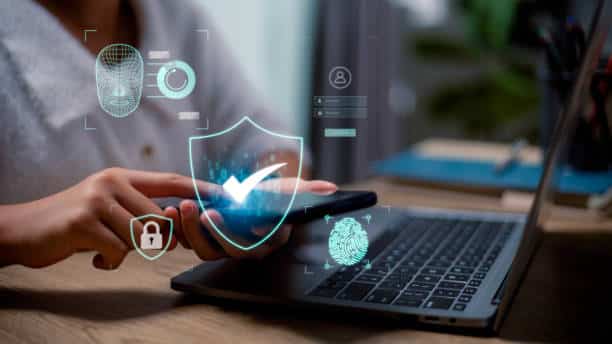Introduction
As the world turns out to be gradually digitized, with information and data essential to organizations and people, network protection is extremely important. Digital risks are proving to be more complex, sequential and complex, making it a constant test to protect sensitive data and uphold the integrity of the electronic database.
As human-generated reasoning (computer-based intelligence) has overwhelmed our industry in recent years, an innovation equipped to crunch massive amounts of information in a limited amount of time has emerged as a distinct advantage, allowing cyber security experts to beef up their guards, detect oddities, anticipate attacks and respond with unparalleled speed and accuracy.
Enter Computerized reasoning (artificial intelligence) and AI (ML), a mechanical pair that promises to reform the way we shield ourselves against digital enemies. This article will delve into the field of computer-based intelligence in electronic protection, exploring how artificial intelligence and human consciousness are changing the landscape of digital guarding.
Why is human intelligence important to network security?

Digital crime syndicates have proactively put resources into artificial intelligence, computerization and artificial intelligence to unleash massive scope, focusing on cyber-attacks against syndicates. The amount of ransomware risks and opportunities affecting organizations continues to grow.
Simulated intelligence and artificial intelligence help security researchers even in overwhelming information probabilities, quickly giving pieces of knowledge in the light of examination and overcoming everyday security precautions and deceptive sides.
This radically elevates your team’s proficiency and efficiency, giving them an edge over potential digital hoodlums. To guard against this advancement of malware, more modern approaches, for example, behavioral examination are proving to be more familiar in network protection.
Investigation and discovery approaches are robust, as all malware ultimately requires exhibiting malicious behavior to succeed. Computer-based intelligence, when properly primed, can monitor, discern, and respond to these vengeful behaviors more quickly than humans alone.
Benefits of Simulated Intelligence in Network Security:
High-level risk location: simulated intelligence calculations can discern and examine complex patterns and anomalies that may slip through the cracks of conventional security efforts, empowering early identifiable evidence of digital risks.
Rapid response and computerization: simulated controlled intelligence frameworks can quickly respond to security incidents, robotic processes such as risk mitigation, ready prioritization and incident response, reducing reaction times.
Distinguishing dark risks: human intelligence and artificial intelligence can analyze a lot of information to identify gambling games like phishing and malware. Human-powered network observers powered by intelligence can monitor customer behavior, detect anomalies, and respond appropriately.
Further developed accuracy and productivity: AI-based online protection frameworks provide further developed accuracy and efficiency in contrast to ordinary frameworks. For example, computer-based intelligence can examine a range of gadgets for potential weaknesses in a fraction of the time it would take, causing potential risks to slip through the cracks and cause additional damage.
Barriers to computer-based intelligence in network protection:

Malicious attacks: human-made information frameworks themselves can become hotbeds of adversarial attacks, where malicious entertainers exploit weaknesses in computer-based intelligence models to misdirect or control the dynamic cycle of the framework.
Information security concerns: The use of simulated intelligence in network security involves handling and analyzing sensitive information, raising information security concerns, stockpiling, and compliance with directives.
Predisposition and separation: computer-based intelligence frameworks can be one-sided and oppressive in direction, causing irrational treatment of particular concentrations or people.
Absence of logic and directness: simulated intelligence frameworks can be difficult to understand and understand, pursuing them by trying to recognize how choices are made. This lack of directness can make it difficult to discern and address errors or biases in context.
Deep Learning and NLP in network protection
We should explore the interesting universe of cyber security and how we use deep brain organizations, a zenith of human consciousness, to discern dangers. Deep learning, a subset of artificial intelligence, uses brain networks powered by the human mind to manipulate data at complex levels.
In electronic protection, these organizations act as highly gifted monitors, unearthing unpredictable patterns and oddities within gigantic data sets. Deep learning and normal language manipulation (NLP) are increasingly being used in network security to improve risk discovery and response. NLP is a part of artificial intelligence that enables computers to understand, decipher and respond to human language.
It applies computation to the investigation of text and speech, turning this unstructured information into an organizing engine that it can understand. NLP can accelerate intelligence review, further develop risk discovery accuracy, and change the way network security professionals work.
NLP can also be used to robotize data gathering and age, to identify coverages in rules and systems, and to make security telemetry noticeable in terms of gambling and consistency. Deep learning computations can be prepared on huge data sets that include various risk situations, enabling them to further develop their location capabilities in the long term. The flexible concept of simulated intelligence allows associations to stay ahead of evolving digital risks and reduce costs.
The ultimate fate of simulated intelligence in network security:

Humanoid Intelligence Guided Threat Hunting: From now on, digital trackers will join forces with simulated intelligence computations to successfully detect lurking dangers.
Independent Incident Response: Human intelligence will take control to address threats independently, mitigating attacks continuously.
Artificial Intelligence as a Network Security Expert: Expect insights and recommendations based on human intelligence, guiding experts to key choices.
Quantum Artificial Intelligence: The combination of quantum imaging and computer-based intelligence will create an uncontrollable boost to digital protection.
conclusion
The use of computer-based intelligence in network security presents both benefits and risks. Computer-based intelligence can fundamentally upgrade threat discovery, response and countermeasures by automating routine tasks, further developing accuracy, and providing a flexible protection framework.
It can also cause cost reduction in cyber protection work and further develop flexibility. However, there are potential downsides, for example, the fact of false upside, the potential for misuse or abuse by cybercriminals.
And the requirement for specific capabilities and information to realize computer-based intelligence. Balancing the benefits and obstacles of computer-based intelligence in network security is important to address its power.

